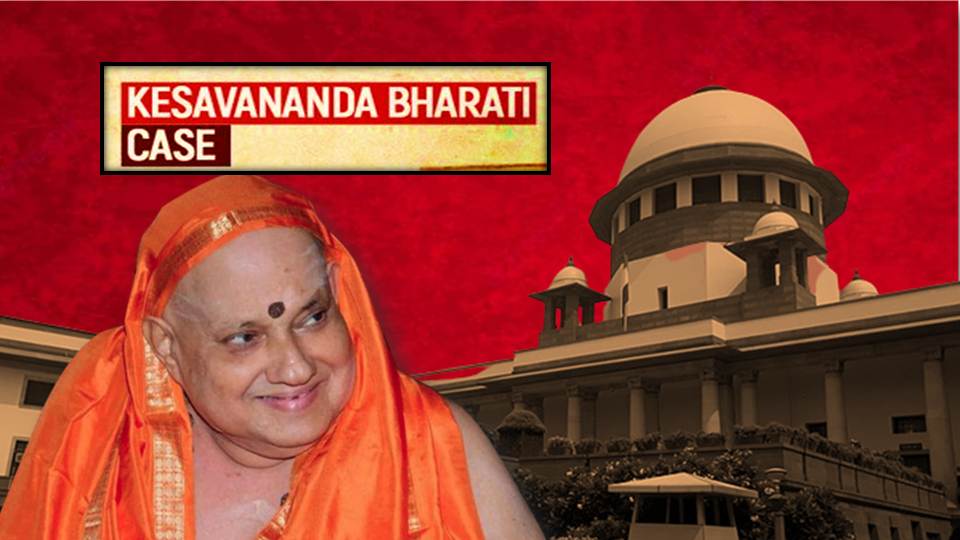Kesavananda Bharati vs State of Kerala case: There are a lot of things in the public domain which are taken as an archetypal truth. Primary reason behind it is that the phenomenon is so old that people forget the rationale behind it first coming into existence. It holds true for unwritten rules, understandings, or contracts running a society, polity, or any other institution. Fortunately, we have a written Constitution. It is a set of many written and unwritten rules. Unwritten rules are the ones that the Supreme Court felt the need to codify as Basic Structure.
Kesavananda Bharati vs State of Kerala case: Supremacy of the Constitution
One of the basic structures advocated by the Apex Court is that of the supremacy of the Constitution. In the 21st century, it looks simple, but is really not. The supremacy of the Constitution is a big positive deviation from monarchic traditions. In most monarchies and other non-democratic forms of government, the words of the king or his council of ministers were paramount. Closest we came to the will of people was having concepts of Janpads.
To be fair to them, the words of the king and his council were not always damaging. They also used to abide by the scriptures and have their interpretations explained by the Gurus. But the fact remains that humans are not immune to their whims and fancies, and neither are kings.
It is reflected in every tyrannical monarchy. Even after democracy was established, the concept of sovereignty could not remain totally detached from the sovereign. In other words, even parliamentary democracies went haywire while adopting the Constitution.
Also read: Understanding Indra Sawhney Case: The post-Mandal “reservation criteria has glaring loopholes in it”
One such example brought before the Court was that of the Weimar Constitution. Hitler had used constitutionally guaranteed measures for exceptional circumstances to undermine the authority of the Constitution itself. He literally killed the Weimar Constitution in letter and spirit, along with millions of Jews.
Similar powers were availed to the Central government in the Indian Constitution. Successive governments were hell-bent on undermining the basic guarantees of freedom available to the masses. They were doing it through amending powers given under Article 368.
The stated objective was that they were doing it for larger goods. The on-the-ground reality was that it was being done only for short-term benefits. In the long term, fundamental rights and even the right to life could be under attack, as it later transpired during Indira’s emergency.
This is where the supremacy of the Constitution balanced the overreach of parliamentary sovereignty. In essence, the judiciary and legislature are both sovereign in their own regard. However, they both are subject to the letter and spirit of the Constitution.
Also read: The spineless “Juvenile Justice Act” needs an immediate upgrade
Objectives of the Preamble
The letter and spirit have been enumerated in the Preamble of the Indian Constitution. The Apex Court held the objectives enshrined in it as a part of basic structure of the Constitution. It did acknowledge that the Preamble is not a source of power, nor would it act as a limiting force on any act by Parliament. In the same breath, the Court held it as part of the Constitution, which means that every law, decree, act, or ordinance has to reflect the Preamble objectives.
Through this judgment, the Preamble achieved the status of a filter through which any official act would take place. The moment it goes against the spirit of the Preamble, the act loses its moral and ethical value in the eyes of the populace. In most of these instances, official orders are challenged in court. The judiciary looks at it and deems it to be either ultra vires or intra vires of the Constitution.
Such a prognosis was not only the need of the hour but also, in a way, a constitutional obligation for the Apex Court. The preamble tells elected representatives that their power derives from the Constitution of India.
It is the preamble that puts an obligation on them to ensure that they use this power for the benefit of Indians. It is the Preamble which puts Justice and Liberty at the top of hierarchy, the foundation of a non-violent society.
Also read: U. Akbar Ali vs. State of Tamil Nadu: The death blow to conversion mafias in India
It is not that these ideas are not found anywhere else in the Constitution. Fundamental rights, Directive Principles of State Policy, Citizenship, Union, Parliament, Judiciary, and many other chapters fulfill the objectives of the Constitution.
However, we inherited a plethora of laws from the British, and many more are always on the horizon. By declaring the Preamble’s objectives as part of the Constitution’s basic structure, the Apex Court opened the floodgates for the scrapping of bad laws and the formulation of good ones.
Support TFI:
Support us to strengthen the ‘Right’ ideology of cultural nationalism by purchasing the best quality garments from TFI-STORE.COM
Also Watch:
https://www.youtube.com/watch?v=5xG1DQHE8EI
